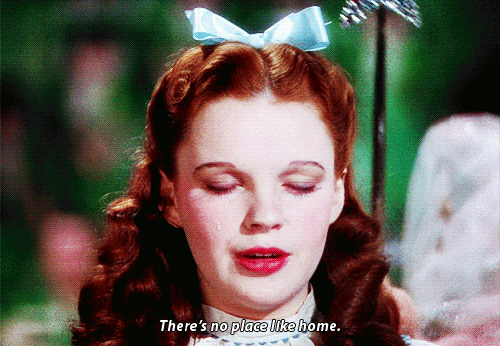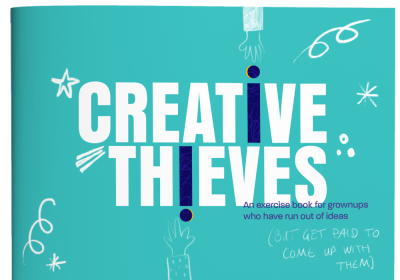I had never really considered this before, but I myself have definitely experienced walking in to someone’s home or environment and it feeling undeniably “them”, not really knowing why.
It made me think…
If we can get a sense from people’s homes that their environment is so intrinsically ”them” I wonder how we can create this feeling for brands too.
We want our branding to feel “us”, whether you’re a one-person business with a personal brand, or an 100-person business with two Co-Founders.
Ensuring our customers welcomed into our brand world with open arms and a feeling that is just right…
That feeling you get when you get home, put your feet up and think “this is where I’m meant to be.”
That feeling, I believe is the essence of great branding.
It’s my belief that there are four stages to creating a brand that feels like home.
Keep reading to find out what they are…
Part 1 – Moving in
I truly believe in the age-old phrase ‘a home is what you make it.’ A house is just the bricks and mortar, but a home is how it feels. Without a bit of heart, some serious thought, and the bravery to rip that wall down, it is ultimately just a pile of bricks.
I believe the same goes for branding.
But what do brands and houses have in common? In my opinion, everything. For the purposes of this metaphor I want to lay the groundwork for what I am talking about when referencing houses and branding throughout these posts. In my view, this is how we can draw parallels:
The house is the brand.
The home is how it feels.
The furniture is all of the tangible assets of the brand like colours, logos, typefaces, icons. The list goes on…
The foundations are the brand strategy and visual positioning – what holds it all in place
The bricks are the necessary elements that make up a business but that maybe don’t always look pretty e.g. A business plan. But they are important, they form the structure and ‘outer shell’ of the business.
You need care about, give thought to, and be brave with your branding choices in order for it to exist as more than justan empty shell, just like with your home.
Branding with heart for me, means giving a personal, thoughtful touch to what would otherwise be just any ordinary ‘house’. You could purchase an “off the shelf” brand identity which works just fine for your needs as a small business, but does it really capture you and the feeling you want to portray to others via your brand?
The same goes for interiors, you could purchase a DIY flatpack set of drawers from a well-known Swedish furniture brand (don’t get me wrong, I love IKEA as much as the next person). But my point is that when we choose items for our homes, or assets for our brands that are truly unique, it is less likely that half of the houses on the street, or competitors in our sector will look the same.
The objects in your home tell a story of your life, much like your identity tells the story of your brand. These assets are what define you and the story you are trying to tell with your brand, as with your home. The most meaningful objects in your house are often rooted in memories, history or sentimental value and go beyond just taste or personal preference. The same should be true with the assets of your brand.
What story does the typography tell?
What feelings do the colours used conjure up?
Usually with objects that contain real meaning in your house, your love for them goes beyond just personal preference. It is more often than not rooted in a much deeper meaning if you just take some time to search for it.
I encourage you to imagine an empty room…
What colour would you choose to paint it?
What does the furniture look like? Is it clean and modern, or is it reclaimed vintage?
Maybe it’s something entirely different.
What do you think the choices you’ve made say about you?
Have you chosen a bright shade of fuchsia for the walls which might suggest you are bold, confident and outgoing?
Or have you opted for a soft off-white colour which helps you to feel calm after a stressful day?
Once you have dug into what these choices might say about you, I’d encourage you to do the same for your brand or business.
Think about your brand as a person, what would their home look like?
Would they have a similar style to you or are they a bit more understated than a bright fuchsia living room?
Think about what these choices might mean for your brand, is it cosy, welcoming and warm, or modern, minimal and clean?
Whatever it is, I encourage you to step out of yourself, and really think about the brand as if it was a separate person and what this means for them.
So what is the point in all of this?
I believe in approaching branding from the inside out. An inside-out approach to design that puts your brand at the heart, thinking about how it feels to interact with you, what you care about, believe in and value before putting up the walls and decorating.
It is so important to establish who you are as a brand, what you stand for, your values and how you want people to feel when they interact with you before putting pen to paper and making it visual. It is easy (and sometimes tempting) to jump straight into designing, but with a solid foundation that feels right for your brand, the right visuals will follow.
Through the brand identities I design for people I hope to create that feeling you get when you get home, put your feet up and think ‘this is where I’m meant to be.’
Part 2 – Getting settled
You’ve moved in, the paint is on the walls, the furniture is in, and now it’s time to get settled. Whilst settling in, it is important to establish the distinction between your self and your brand. Although our homes and our brands are a reflection of ourselves, it is important that we distinguish between the two. You live in the house and fully embody it but you are not your brand. Embodying your brand/home is about you stepping into it, adding your own personal touch and it feeling just right, without putting yourself so closely within the brand that you are one and the same.
What about personal brands I hear you ask?
I still think in this instance it is arguably even more important to remove yourself from the brand and try to view a branding exercise objectively. For instance, you might be a wedding planner who works 1 to 1 with couples, your business name is your name and you are a sole trader working on your own. Even though your brand is you in the sense that it is your name and your services, you are not your customer, therefore when designing the visual identity, you need to put them at the heart of the brand, not yourself.
Going back to thinking about how this compares to homes, when making decisions about your house, you don’t just think about how you feel when you’re in it, you think about how others feel too. The same goes for functionality. It’s unlikely that you just have one chair, one set of crockery and cutlery, instead I’d imagine you have enough chairs so that guests are comfortable when they visit, and enough plates so that everyone visiting can enjoy their meal. It is important that you make your home accommodating for yours, and others needs, which is the same with your brand identity. It needs to feel right and work for you, but also be welcoming and appealing to those who interact with it.
I believe that successful branding decisions are made by removing decisions based on ‘likes’ and ‘dislikes’ and instead making strategic choices based on what’s best for the brand (or house). For example, you might love Scandinavian minimalism but if it doesn’t feel right or suit the style of your Victorian terrace then it is not necessarily the right decision for the overall decor of the house. Usually there will be a happy medium that satisfies both you and your customers.
‘Because I like the colour’ is not (in my opinion) the way to make strategic branding choices. You may choose to paint your bedroom Farrow & Ball Hague Blue because you like the colour. But I would challenge you to look deeper to uncover why you really are drawn to it. It might be that you want to create a dark, moody and dramatic atmosphere in your bedroom. Or painting it Bright White, might help your small bedroom to feel more spacious and lighter, which helps you to feel more positive and uplifted when you wake up in the morning.
Think about the branding decisions you make, and who you’re making them for.
Up next is part 3, all about opening the doors once we’ve settled into our brands, and inviting our customers in to share it with us.
Part 3 – Opening the doors
Whether it starting a new business or undergoing a rebrand, there comes a time when all of the branding decisions have been made, everything is ready to go and you launch into the world. The same goes when you move house. Once you’ve settled in and tidied everything away, you can open up the doors to visitors. When you excitedly fling open the doors, you want people to feel welcome in your home, much like you want your customers to feel welcome and at home with your new branding.
This goes back to the point I made in part 2 around the importance of making decisions based on the needs of your customers, and this goes for both aesthetics and functionality. It is important that people interacting with your brand feel like it resonates with them. This could be through colour choices, friendly typography or the brand’s tone of voice. It is equally important that your customer (or visitor) is able to properly use and interact with the brand. Nobody appreciates a broken toilet seat when they go round someone’s for dinner, nor do they appreciate a website that is hard to use and is slow. These things are all branding, and they are important.
Jeff Bezos says that branding is what people say about you when you’re not in the room. Whilst I see the merit in this, I also somewhat disagree. For me, branding is the room. It is the foundations holding the room up, the bricks, the colour on the walls, the furniture, the prints you have up on the walls, the music you’re playing, the temperature of the room, what the room smells like, the textures of the fabrics, and who is in the room with you.
Sorry Jeff…
Your customers should feel like they belong when they are in your brand home. It should be a welcoming place that feels like a home from home. This is how brands create real brand love from their customers, through creating meaningful branding experiences that ‘just feel right’ to the customer. Think about Apple, arguably one of the world’s most loved brands. When they opened up their Apple Stores in the early 2000’s, people flocked there to spend time in the immersive, brand-led environments that they had created. I for one remember spending hours on a Saturday keenly queuing outside, only to be let in to spend countless hours on different devices, getting a real feel for what it would be like to own one of their products. It was aspirational but it also felt friendly and approachable to a 14-year-old student (despite the huge price tag).
Apple is obviously an off-the-scale example, and one of the world’s biggest brands. However, I think we can apply this customer-centric thinking to our own brands, no matter how small. The importance, I believe, is to start with how we want our customers to feel, and make our branding decisions based on that.
Stay tuned for the final part in this series all about what happens when you want to rebrand (or move house for the sake of the metaphor).
Part 4 – Moving house
Sometimes your home or your brand changes and evolves as time passes and your needs as a business change. You will sometimes swap out and upgrade the furniture, or a colour here and there, but ultimately the essence of your home stays the same (if it has been built right in the first place).
Our spaces change when our focus or needs shift which requires reflection and thoughtful choices, and the same goes for branding. It is not something that I believe should be rushed.
You might also have different needs from your home or brand and you decide to move. The bricks and mortar are different but the essence or feel remains the same because you take your possessions and memories with you and therefore the heart of the home stays the same.
As I mentioned in part 1, I believe a home is what you make it. A house is just the bricks and mortar, but a home is how it feels. This is why, if and when you do decide to rebrand you need to take with you what still resonates, what is still important, and renew or upgrade anything that no longer serves you or your customers, anything that is no longer serving a purpose, or is broken.
Most people will not live in the same place for their whole lives, it’s likely they will move on, upgrade and change things as their needs and circumstances change. The same goes for branding, and that’s okay. You won’t necessarily get it all right straight away, or you might make a colour choice that in a few years makes you look back and wonder “what was I thinking?” and that’s okay. The important thing is to consider all of your choices carefully and think about whether a rebrand needs to be a renovation or a redecoration. Does it need a complete overhaul? We’re talking ripping down walls and putting in a new kitchen. Or do you just need to subtly evolve, update and modernise, ensuring it feels more aligned with where the business and your customers are at now?
Uncovering all of this is where the real magic lies, and is where we can create brands that truly feel like home. After all, there’s no place like it.
Does your brand need a lick of paint? Get in touch to find out how we could work together to bring your brand home.

____






